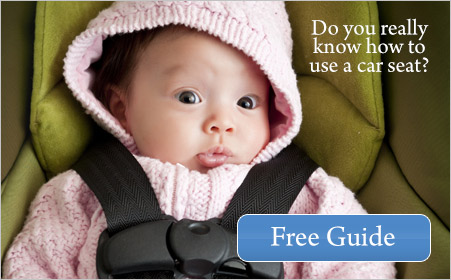
There are a lot of exciting options when buying a new vehicle. There are different brands, styles, colors, and features to consider. It may be difficult to choose the perfect vehicle, but are you considering vehicle safety? Are the trendy options really worthwhile if the car is not safe?
Still, it could be easy to get overwhelmed with the technical aspects of choosing a vehicle, but it doesn’t have to be this way. There are a few simple steps and some informative websites to make this decision as easy as possible and to help prevent collisions.
Crash Test Safety
When most people think of vehicle safety, the first thought is about how safe the vehicle’s passengers will be in the event of a crash. This is certainly important because, no matter how careful the driver is, there is always a possibility of being in a crash, or worse, hitting a pedestrian.
There are a few valuable resources on this topic, but the National Highway Traffic Safety Administration is an authority in this area.
On this page, the three crash tests that are done are described in detail, and from this page, the user can search for a specific vehicle’s ratings. There are stars assigned on a simple five-star scale indicating how well the car performed in each test. The more stars a vehicle has, the safer it is.
Safety Features
While crash test ratings are very important when researching a vehicle, it is also important to research safety features. These are features that are designed to help you keep from having an accident in the first place. Here are some safety features to look for in your potential new vehicle. While this list is somewhat exhaustive, reading through it should help you decide which features would be most helpful to you.
- Back up camera – These are cameras on the back of the vehicle that turn on when the vehicle is in reverse. It gives a much more complete view of the area behind the vehicle making backing up safer.
- Alertness detection systems – These have sensors that detect if the driver’s behavior indicates drowsiness, and will alert the driver that he may be driving unsafely.
- All-wheel drive – This gives power to all the wheels of the vehicle to increase traction.
- Anti-lock brakes – When the driver applies the brakes and the vehicle begins to slide, the anti-lock brakes optimize braking at each wheel to stop the car as quickly as possible.
- Traction control – This is similar to anti-lock brakes except it happens during acceleration instead of deceleration. When the vehicle accelerates and begins to spin, traction control helps to optimize the wheels to stop the spinning.
- Electronic stability control – Electronic stability control takes traction control a step further. Instead of simply stopping the vehicle from spinning, it detects the path in which the vehicle needs to go and keeps the vehicle going in that direction. This keeps the vehicle in the correct lane.
- Forward collision warning – The vehicle uses sensors in front of the vehicle, steering direction, and vehicle speed to detect if a crash is likely. If a crash is imminent, the vehicle will warn the driver.
- Pedestrian detection – This is similar to forward collision warning, but it is able to detect a hazard in the road as small as a pedestrian. If a crash is imminent, it will alert the driver to brake immediately.
- Automatic emergency braking – This takes forward collision warning and pedestrian detection (if equipped) a step further. Instead of simply warning the driver of an imminent crash, it automatically applies the brakes to avoid the crash without the assistance of the driver.
- Blind spot warning – When the turning signal is activated by the driver to merge into another lane, the vehicle uses sensors or cameras to determine if another vehicle is in the other lane. If there is another vehicle, the driver will be alerted of the potential danger.
- Adaptive cruise control – Adaptive cruise control uses sensors in the front of the vehicle to detect the vehicle which it is following. Instead of maintaining the speed set by the driver, it simply follows the other vehicle at a safe distance.
- Lane departure warning – This uses sensors or cameras to detect if the vehicle is drifting out of its lane without the turning signals being activated by the driver. The driver is then alerted of the possible danger.
- Lane-keeping assist – This is a step beyond lane departure warning. Instead of just warning the driver of the potential danger, it takes slight control of the steering and keeps the vehicle in its lane. When used in conjunction with adaptive cruise control, it can almost produce the effect of a self-driving car. The driver must stay alert because it is by no means self-driving, but all the driver really must do is stay alert for dangers and be ready to direct the vehicle in the lane changes and direction to reach the destination.
- Rear cross-traffic alert – This is especially helpful in parking lots. When the vehicle is put into reverse, it detects and alerts the driver if a pedestrian or another vehicle is going to cross behind the vehicle.
- Parking assist systems – This uses various sensors that are all around the vehicle to alert the driver if the vehicle is close to bumping another object while parking.
- Automatic parking systems – This uses the parking assist system to park the vehicle for the driver. All the driver must do is monitor the vehicle for safety.
- Automatic high beams – When meeting oncoming traffic at night, the driver needs to switch to low beams for the safety of the other driver, then reactivate high beams when the vehicle has passed. Automatic high beams do this for the driver so the high beams are on for increased visibility as much as possible.
- Adaptive headlights – These use the angle of the steering wheel to turn the headlights in the direction the vehicle is going. This makes it much easier to see hazards that are around curves earlier, resulting in faster reaction times and decreased accidents.
How to Buy
When choosing a vehicle, getting what is best for you and your family is important. While choosing preferences is exciting, be sure that the vehicle you purchase is safe. Check with the National Highway Traffic Safety Administration’s website to see how well it performed in crash tests.
Also, choose which safety features listed above you believe would be most helpful for you to be a safe driver, and look for these in your next vehicle. With the thousands of types of vehicles on the market, there is one that suits every taste. With a little research, you are sure to find the perfect vehicle for you and your family with safety and style.
Sources
Consumer Reports http://www.consumerreports.org/cro/2012/04/guide-to-safety-features/index.htm
Nerd Wallet https://www.nerdwallet.com/blog/loans/auto-loans/7-new-car-features-save-life/
NHTSA https://www.nhtsa.gov/ratings
Reader’s Digest http://www.rd.com/advice/9-car-safety-features-to-look-out-for/
State Farm https://www.statefarm.com/simple-insights/safety/latest-car-safety-features-becoming-musthaves
The Car Expert http://www.thecarexpert.co.uk/what-makes-a-car-safe/















